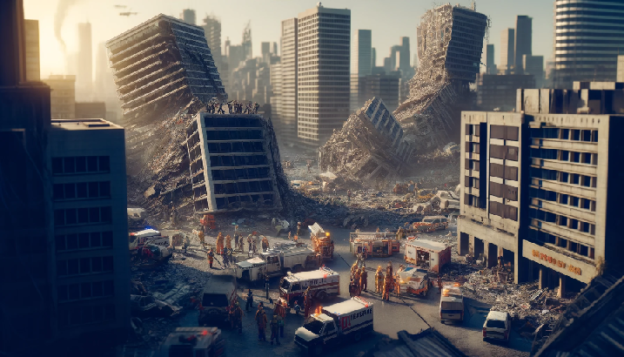The condition of the ground is an important factor in determining how strongly an earthquake will be felt. For example, in the 1891 Nobi earthquake (Japan), the 1923 Kanto earthquake (Japan), and the 1985 Mexico earthquake (Mexico), the softer the ground, the stronger the earthquake shaking. Especially in softer strata, seismic waves are slower, so the shaking is greater. This shaking is further intensified when the period of the strata coincides with the period of the earthquake or building. This is called resonance and is the cause of many building failures.
For example, in the 1891 Nobi Earthquake in Japan, most houses near the epicenter were destroyed, but the number of houses destroyed decreased as one moved farther away from the epicenter. At a distance of 50 km from the epicenter, few houses were broken in areas with hard ground, while many were broken in areas with soft ground; in the 1923 Kanto earthquake in Japan, few houses were broken on the Yamanote plateau in Tokyo, while many were broken in the Arakawa lowlands; in the 1985 Mexico earthquake, the collapse of tall buildings in particular was observed, but this was also caused by soft ground.
The destruction of homes by earthquakes has a major impact on human casualties, fires, and even society as a whole. Therefore, when considering earthquake countermeasures, it is very important to carefully examine the condition of the ground.
Source URL:https://dil.bosai.go.jp/workshop/2006workshop/gakusyukai19.html






